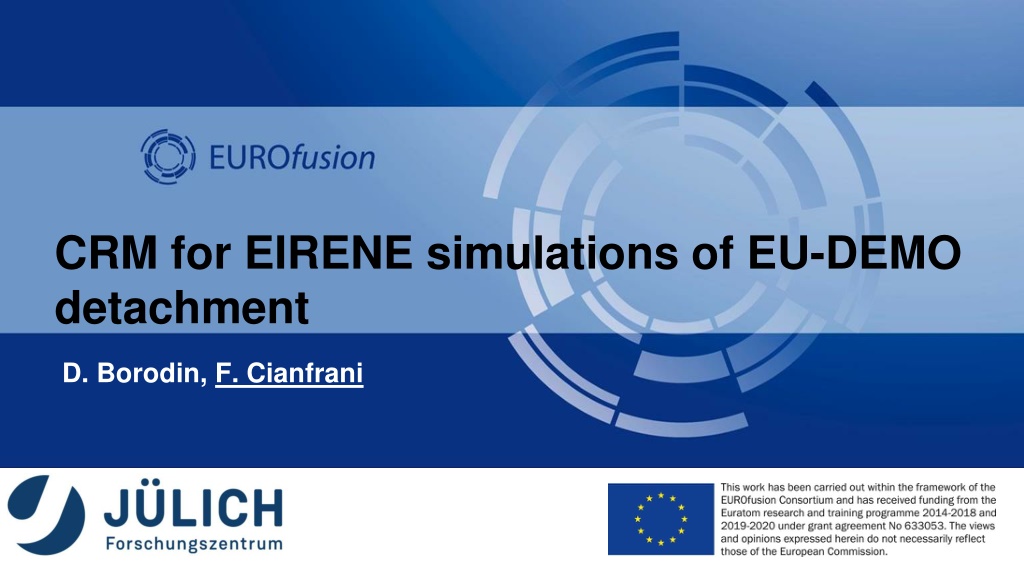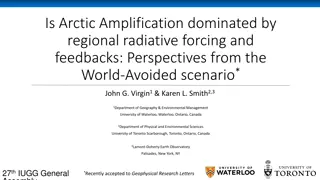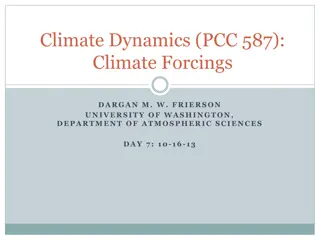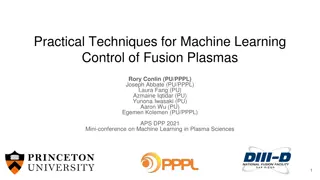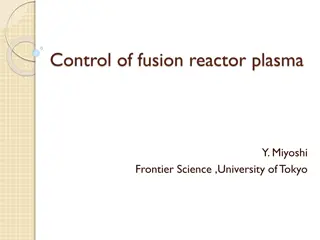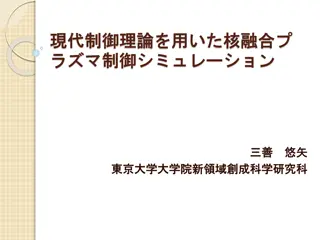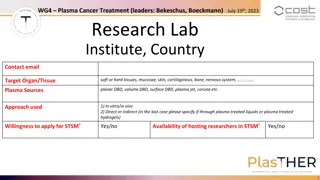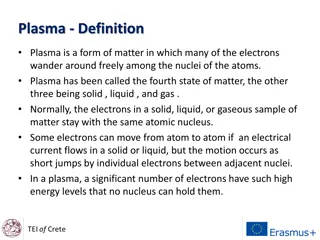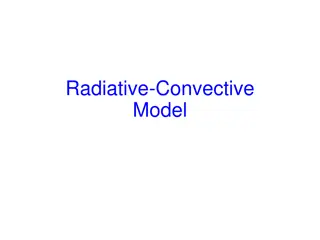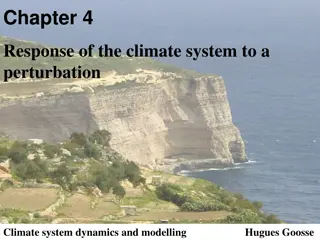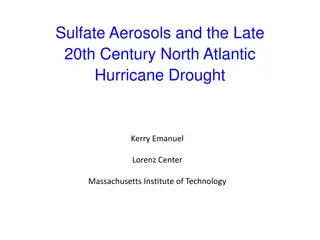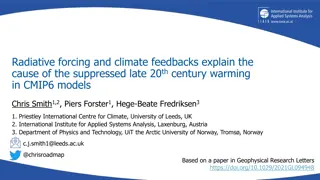Understanding Collisional-Radiative Models for Plasma Detachment Control in Tokamaks
Explore the application of Collisional-Radiative Models (CRM) in EIRENE simulations for plasma detachment control in tokamaks. Learn about detached plasma divertor, main reactions in transport, vibrational states in molecular species, and more through a detailed study of particle species, reaction types, and plasma parameters.
Download Presentation

Please find below an Image/Link to download the presentation.
The content on the website is provided AS IS for your information and personal use only. It may not be sold, licensed, or shared on other websites without obtaining consent from the author. Download presentation by click this link. If you encounter any issues during the download, it is possible that the publisher has removed the file from their server.
E N D
Presentation Transcript
CRM for EIRENE simulations of EU-DEMO detachment D. Borodin, F. Cianfrani
INTRODUCTION Detached plasma divertor: plasma temperature below 10eV atomic and molecular (A&M) reactions CRM: list of particles/reactions: balance equations equilibrium btw plasma A&M species YACORA: solver+ established database [1] CRM in tokamaks EIRENE: Monte-Carlo transport solver + CRM AIM: Interchange btw YACORA and EIRENE to provide CRM for detachment control modelling CRM with molecular source molecular source from simulations JET EU-DEMO This work: main reactions in transport F. Cianfrani | CRM for EIRENE simulations.. | 8.7.2022 | Page 2
COLLISIONAL-RADIATIVE MODEL H+, H, H2+,H2 Particle species Reaction Type Source molecular ionization H2vibr H2 + e H2+ + e + e H+, e sinks (reservoirs) neutral dissociation H2vibr H2 + e H2(btriplet) H+ H + e Molecular source: Reference value dissociative ionization Amjuel H2 + e H+ H++ e + e charge exchange (CX) H2vibr H2 + H+ H2+ + H ionization Amjuel H + e H++ e + e Plasma parameters: Fixed electron and ion densities: neutral dissociation (MAD) Amjuel H2+ + e H + H+ + e ne= ni= 1019m-3for [1] JET dissociative ionization (MAI) Amjuel H2+ + e H+ + H++ e + e ne= ni= 1021m-3 for [2] EU-DEMO dissociative recomb (MAR) Amjuel H2+ + e H+ H Temperature: Te= Ti= 0.2 30eV. [1] M Groth et al. 2013 Nucl. Fusion 53 093016 [2] F Subba et al. 2020 Nucl. Fusion 61 106013 F. Cianfrani | CRM for EIRENE simulations.. | 8.7.2022 | Page 3
COLLISIONAL-RADIATIVE MODEL: results JET YACORA solver H2+density peak large H2density EU-DEMO F. Cianfrani | CRM for EIRENE simulations.. | 8.7.2022 | Page 4
COLLISIONAL-RADIATIVE MODEL: results EU-DEMO low temperature (T < 2eV) leading reaction chains: H2+H+ H2++H H2++e H+H++e MAD MAR/MAD competition at very low temperature MAR H2+H+ H2++H H2++e H+H F. Cianfrani | CRM for EIRENE simulations.. | 8.7.2022 | Page 5
VIBRATIONALLY RESOLVED CRM vibrationally resolved molecular states H2(v) (v=0 ..14) with electron-induced ladder-like trans H2(v) + e H2(v 1) + e rates H2vibr EU-DEMO vibrational transitions are the main reaction channels at low temperatures F. Cianfrani | CRM for EIRENE simulations.. | 8.7.2022 | Page 6
MOLECULAR TRANSPORT molecule density scales linearly with the source effective source term JET up-stream region: substantial overlap effective source and density Gas puffing F. Cianfrani | CRM for EIRENE simulations.. | 8.7.2022 | Page 7
MOLECULAR TRANSPORT molecule density scales linearly with the source effective source term JET divertor region: discrepancy novel physical conditions (dominance of CX reactions at low temperature) Gas puffing F. Cianfrani | CRM for EIRENE simulations.. | 8.7.2022 | Page 8
CONCLUSIONS CRM for A&M reactions in 1) it captures game-changing branching difference in dependence of plasma temperature for various reaction contributions (MAD vs MAR, vibrational trans vs dissociation/ionization) 2) the molecular source (D2influx) is introduced and a way to related it with EDGE2D-EIRENE runs including transport in divertor is demonstrated 3) it is staged for both standalone use (as presented) and for intergration into EIRENE for detachment control analysis 4) an extension to include isotope effect and electronic excitations for computing spectroscopic emission (opacity) is foreseen. F. Cianfrani | CRM for EIRENE simulations.. | 8.7.2022 | Page 9
Thanks for the attention! F. Cianfrani | CRM for EIRENE simulations.. | 8.7.2022 | Page 10
